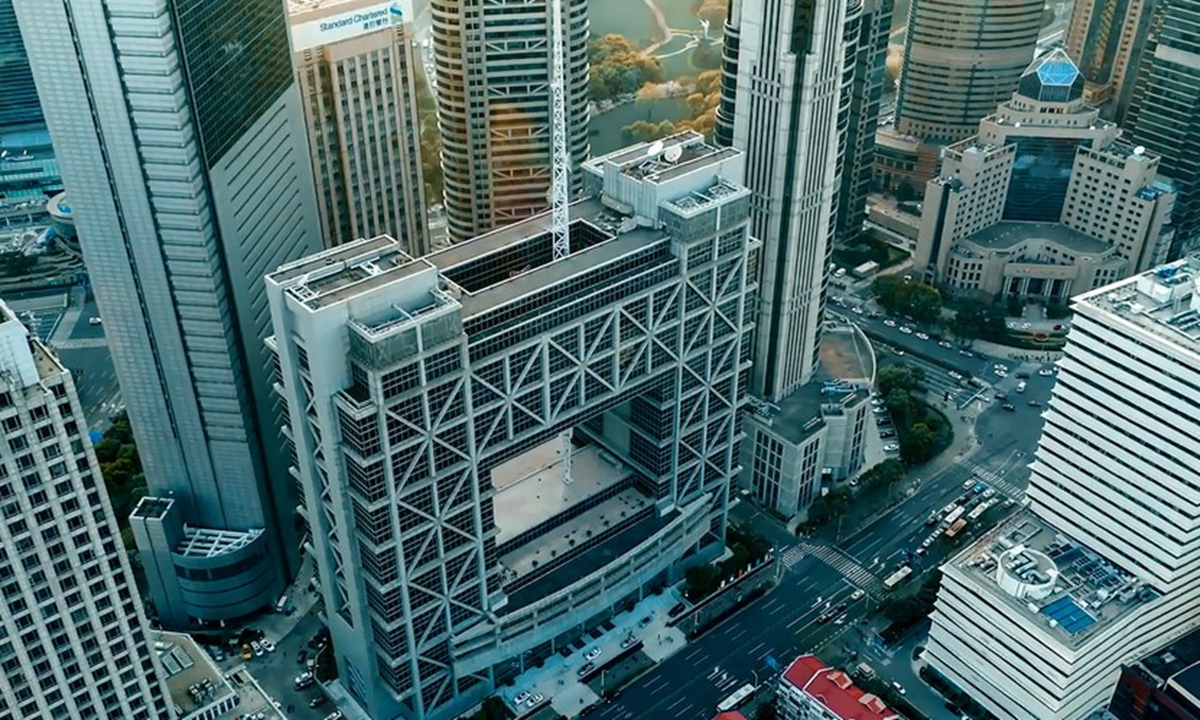Commentary: At 30, Shanghai's Pudong sheds light on China's future
Source: Xinhua Published: 2020/11/13 11:45:23

File photo shows the exterior view of Shanghai Stock Exchange at Pudong New Area in Shanghai, east China. (Xinhua)
As Shanghai's Pudong, the forefront of China's reform and opening-up, embraces its 30th birthday this year, the significant progress it made is becoming a powerful driver for China to unlock new possibilities in pursuing high-quality development.
Efforts should be made to make Pudong a pioneer of reform and opening-up at a higher level and a vanguard of fully building a modern socialist country, said Chinese President Xi Jinping in his speech at a grand gathering held Thursday to celebrate the 30th anniversary of the development and opening-up of Pudong.
It was Xi's first trip outside Beijing after the fifth plenary session of the 19th Communist Party of China (CPC) Central Committee, a key meeting held in October to chart the course for China's development in the next 15 years to guide the country's march toward modernization. It signals the Party's commitment to socialism with Chinese characteristics and reform and opening-up.
Covering an area of 1,210 square km, Pudong has seen its regional GDP surge more than 210 times from 6 billion yuan (about 906 million US dollars) in 1990 to 1.27 trillion yuan in 2019.
Pudong's development does not only embody economic growth. In his speech, Xi, also general secretary of the CPC Central Committee and chairman of the Central Military Commission, called for all-out efforts to make the engine of innovation stronger, encouraging Pudong to achieve major breakthroughs in key and core technologies and contribute more to ensuring stability of the country's industrial and supply chains.
He also urged strengthening the synergy in advancing reform, promoting opening-up, enhancing Pudong's capability of allocating global resources, establishing an international financial-asset trading platform and developing a higher-level economy that makes companies set up their headquarters. Modernization of urban governance will also be accelerated.
These requirements for Pudong's development offer a panoramic view of China's high-quality development.
Three decades of Pudong's development have been accompanied by Western critics' prejudice and bias: "The CPC will not succeed," "Socialism does not work," "The Chinese are not creative," "They have a big problem with the relation between government and market." Yet everyday the world sees a Pudong succeeding in exceptional ways.
By the end of 2019, Pudong was home to over 300 regional headquarters of multinationals, and more than 240 foreign-invested research and development centers. Shanghai Pudong International Airport handled 3.63 million tonnes of cargo in the same year, ranking among the top cargo hub airports in the world. US carmaker Tesla has its made-in-China Model 3 manufactured in Pudong. People living in the area have seen significant increase in per capita disposable income, per capita living space and per capita park area.
Pudong is close to where the CPC held it first national congress. When the founding fathers of the CPC secretly convened the first CPC national congress in 1921, they had a dream for a new China and a new world. Almost a century later, Pudong's achievement demonstrates that the CPC has acted on the founding fathers' original aspiration and mission -- the happiness of the Chinese people and the rejuvenation of the Chinese nation.
The Pudong miracle will continue. It will be an encouraging harbinger of what awaits many other areas in the country. It will power China's new march to modernization and inject fresh impetus into the recovery of the world economy.
Posted in: ECONOMY